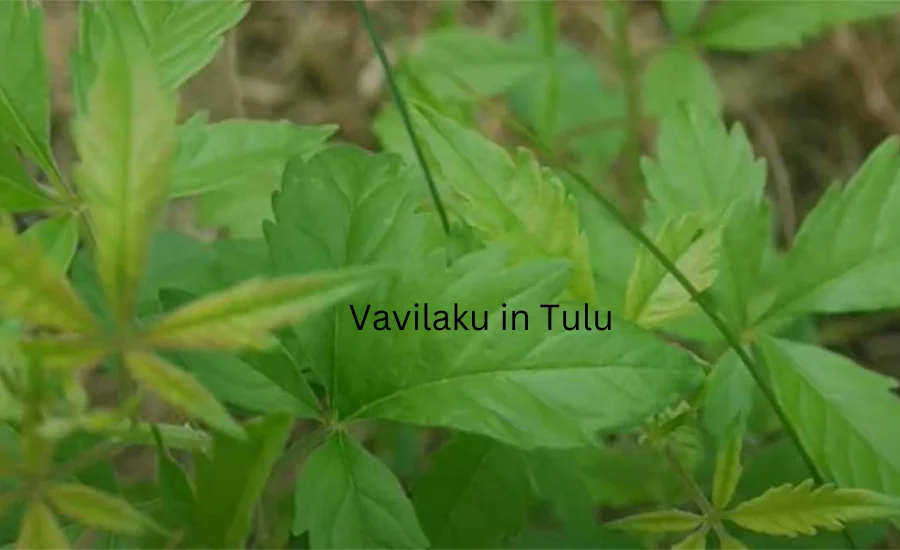The Vavilaku in Tulu community, primarily located in the coastal regions of Karnataka, India, is renowned for its rich cultural heritage. This heritage is characterized by unique traditions, rituals, and festivals that reflect the community’s historical roots and spiritual beliefs. One significant element of Tulu culture is the vavilaku, an oil lamp that holds profound symbolic and practical importance. This article explores the origins, cultural significance, and contemporary relevance of the vavilaku in Tulu culture.
Historical Origins of Vavilaku
The vavilaku, a traditional oil lamp, has been a vital part of Tulu culture for centuries. Its use is believed to date back to ancient times when the Tulu region was predominantly agrarian. The vavilaku symbolized prosperity, enlightenment, and divine presence, making it an essential element in both household and communal ceremonies. Historical records and folklore suggest that these lamps were used during agricultural rituals to seek blessings for a good harvest, ensuring the community’s well-being and prosperity.
Evolution of Vavilaku Over the Years
Over the years, the design and use of vavilaku have evolved significantly. Initially crafted from simple earthenware, these lamps have transformed into intricate artifacts made of brass and bronze. These metal lamps are often adorned with detailed engravings and designs, reflecting the artistic skills and cultural values of the Tulu community. The evolution of vavilaku mirrors the community’s transition from a simple agrarian society to a more complex and urbanized culture, while still holding on to its traditional roots. These lamps are not only functional but also serve as decorative pieces, often passed down through generations as family heirlooms, preserving the legacy and traditions of the ancestors.
Vavilaku’s Role in Tulu Festivals

The vavilaku is more than just a source of light; it embodies deep spiritual and cultural values. It is prominently featured in various Tulu festivals and rituals, serving as a bridge between the physical and spiritual realms. The lamp’s light is considered sacred and is believed to ward off negative energies, bringing peace and prosperity to the household and community.
The Role of Vavilaku in Kambala
Kambala, a traditional buffalo race, is one of the most notable festivals where vavilaku plays a crucial role. During the festival’s initial prayer ceremonies, the vavilaku symbolizes the invocation of divine blessings for a successful and prosperous event. The lighting of the vavilaku marks the beginning of the festivities and is a moment of great reverence. Participants and spectators alike gather around the lamp, offering prayers and seeking the favor of the divine for a successful event. The glow of the vavilaku adds to the festive atmosphere, symbolizing hope and joy.
Vavilaku in Bhoota Kola Rituals
Bhoota Kola, a ritualistic dance form dedicated to the worship of spirits and deities, prominently features the vavilaku. The lamp is lit to signify the presence of divine entities and to ward off evil spirits. It is believed that the light from the vavilaku guides the spirits and deities during the ritual, ensuring their benevolence and protection for the community. The dance, accompanied by the rhythmic beats of traditional instruments, creates a mystical ambiance where the light of the vavilaku becomes a focal point of the ritual. The performers, adorned in elaborate costumes and makeup, dance around the vavilaku, invoking the spirits and seeking their blessings for the community’s prosperity and well-being.
Symbolism and Daily Rituals of Vavilaku
The symbolism of the vavilaku extends beyond festivals to everyday rituals and practices. It represents purity, knowledge, and the triumph of light over darkness. The daily lighting of the vavilaku is a tradition that connects the community to its cultural roots, reinforcing values of discipline and reverence.
Daily Use of Vavilaku in Tulu Homes
In many Tulu households, lighting the vavilaku at dusk is a daily ritual believed to bring prosperity and ward off negative energies. The lamp is often placed in the prayer room or at the house entrance, symbolizing the welcoming of positive energies and the divine. This practice reflects the community’s belief in the protective and purifying powers of light. The act of lighting the vavilaku is often accompanied by chanting prayers or hymns, creating a serene and pious atmosphere in the home. The soft glow of the vavilaku is seen as a beacon of hope and positivity, guiding family members through the challenges of daily life.
Vavilaku’s Significance in Special Occasions
During special occasions like weddings, housewarming ceremonies, and religious observances, the vavilaku plays a pivotal role. It is used in various rituals to bless the event and ensure the well-being of participants. The presence of the vavilaku is considered auspicious and integral to the success of these ceremonies. For instance, during weddings, the vavilaku is often placed at the altar, symbolizing the divine presence and blessing the union of the couple. During housewarming ceremonies, lighting the vavilaku signifies the inauguration of the new home and the invocation of divine protection and prosperity for its inhabitants.
Modern-Day Importance of Vavilaku in Tulu Culture

Despite rapid modernization, the vavilaku continues to hold significant cultural relevance. It remains a symbol of the community’s rich heritage and enduring connection to traditional values. The vavilaku serves as a tangible link to the past, reminding the Tulu-speaking community of its cultural identity and ancestral wisdom.
Vavilaku in Contemporary Celebrations
In contemporary Tulu households, the vavilaku is a cherished artifact. During festivals like Deepavali, the festival of lights, the vavilaku is lit in homes and public spaces, maintaining the tradition of celebrating light and dispelling darkness. This practice highlights the blend of traditional values with modern lifestyles. The vavilaku, with its timeless design, fits seamlessly into both traditional and contemporary decor, symbolizing the continuity of cultural practices in a modern setting. Families gather around the vavilaku during these festivals, sharing stories and creating memories, thus passing on the cultural heritage to the younger generation.
Efforts to Preserve the Tradition of Vavilaku
Efforts are being made to preserve and promote the cultural heritage associated with the vavilaku. Cultural organizations and community groups organize workshops and events to educate younger generations about the vavilaku’s significance. These initiatives ensure that the knowledge and practices related to the vavilaku are passed down, keeping the tradition alive. Additionally, artisans and craftsmen continue to create vavilaku using traditional methods, ensuring the authenticity and cultural integrity of these artifacts. These initiatives foster a sense of pride and belonging among the community members, encouraging them to uphold and celebrate their rich cultural heritage.
Final Words
The vavilaku is a testament to the rich cultural and spiritual heritage of the Tulu-speaking community. This traditional oil lamp, with its historical origins and evolving significance, embodies the values of prosperity, enlightenment, and divine presence. As a vital part of Tulu festivals, rituals, and daily practices, the vavilaku serves as a bridge between the past and the present, maintaining a connection to ancestral wisdom and cultural identity.
Despite the rapid changes brought by modernization, the vavilaku continues to hold a cherished place in Tulu households and celebrations. It symbolizes the community’s resilience in preserving its traditions while adapting to contemporary lifestyles. Through educational initiatives and cultural preservation efforts, the significance of the vavilaku is passed down to younger generations, ensuring that this beautiful tradition remains vibrant and relevant.
Understanding the vavilaku’s role in Tulu culture provides a deeper appreciation of the community’s values and practices. It reminds us of the importance of light in dispelling darkness, both literally and metaphorically, and the enduring power of cultural heritage in shaping our identities and guiding our paths forward. The vavilaku, in its timeless glow, continues to illuminate the lives and traditions of the Tulu community, celebrating their unique cultural legacy and inspiring future generations to honor and uphold their rich heritage.
For more information join us on Trend Revolve

Leave a Reply